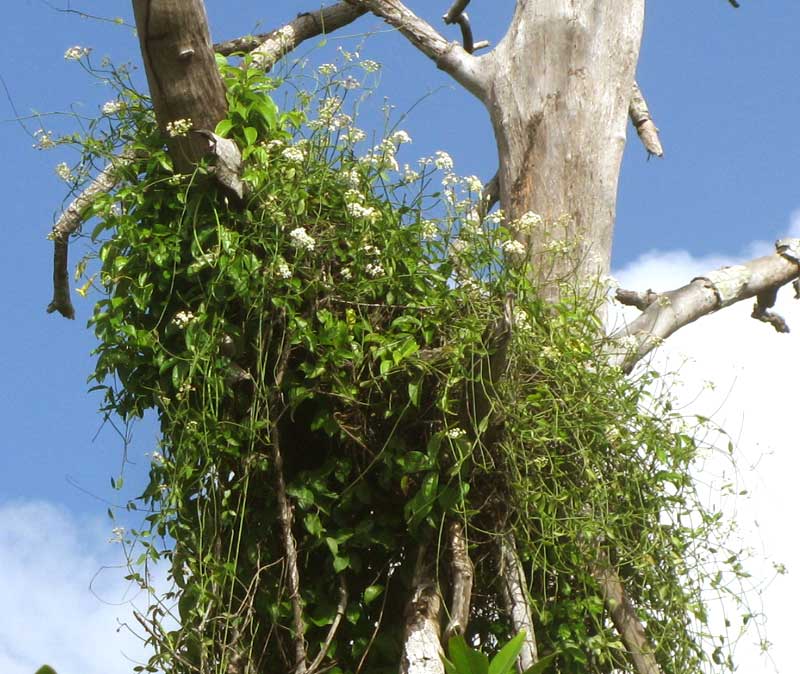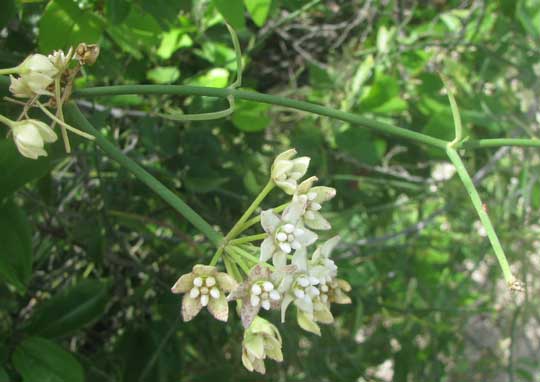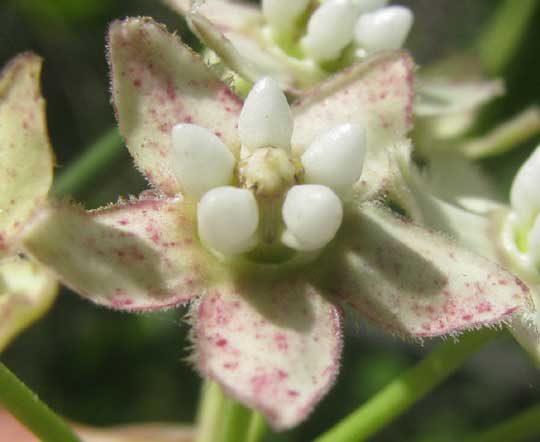Excerpts from Jim Conrad's
Naturalist Newsletter

from the October 16, 2011 Newsletter issued from Mayan Beach Garden Inn 20 kms north of Mahahual; Caribbean coastal beach and mangroves, ~N18.89°, ~W87.64°, Quintana Roo state, MÉXICO
WHITE TWINEVINE FLOWERING
Along mangrove edges there's a robust, high-climbing vine conspicuously flowering nowadays. You can see a tangled clump of it about 20 feet up a big snag above. An umbel -- a flower cluster with blossoms on short stalks of equal length arising from a common point -- of its fragrant, white, pea-size flowers is shown below:

A close-up of the vine's very distinctive blossom appears below:

If you're familiar with wildflowers you may recognize the blossom's general design as being that of the milkweeds. We have a page on milkweed flower structure at www.backyardnature.net/fl_milkw.htm.
The main English name for this vine seems to be White Twinevine. It's FUNASTRUM CLAUSUM, a member of the old Milkweed Family, which lately has been lumped into the big Dogbane Family we've met so frequently, in which oleander, frangipani, allamanda, periwinkle and others also are found.
Maybe you remember that most members of the Dogbane Family exude white latex if injured, and that that latex often contains poisonous chemicals. White Twinevine is especially milky-juiced. In Jamaican folk medicine the plant is used as a remedy for colds, while in Costa Rica and Guatemala poultices are made from the plant's crushed leaves and used to kill flesh-burrowing maggots of the Human Botfly, Dermatobia hominis.